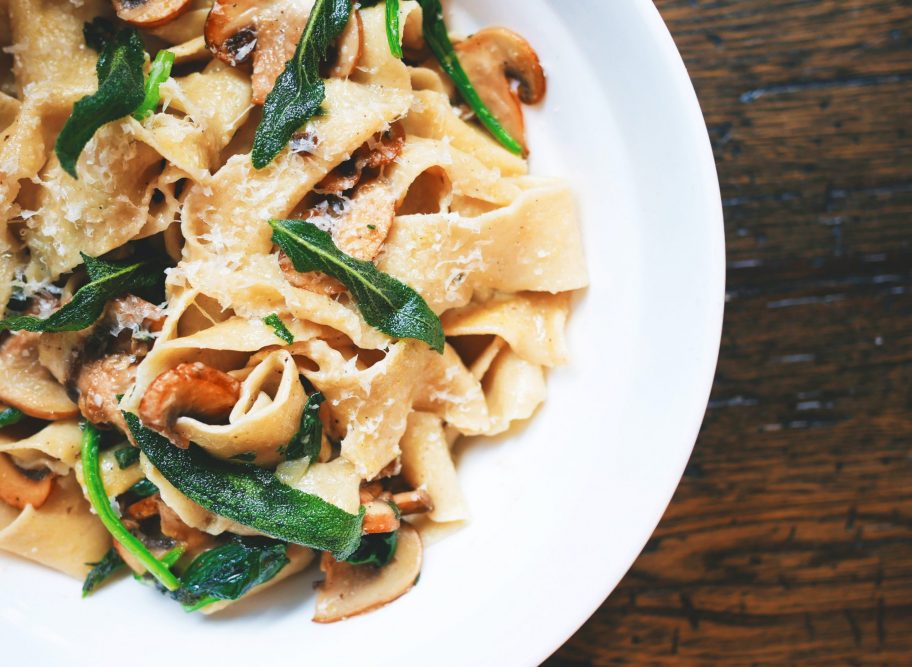By now the news that adaptogenic mushrooms have major health benefits is everywhere but for some of us, our eating habits are lagging behind. What kind of mushrooms should we be eating? How much and how often? How do you convince younger, fussier eaters to try them? And how do we work enough mushrooms into our daily diets to truly take advantage of their functional and adaptogenic benefits?
Different mushroom varietals offer varying health benefits so start simple and seek out what your body needs from there. For example, during the winter months many North Americans are lacking the Vitamin D we get from the sun in summertime but a single portobello mushroom provides the daily recommended dose of D, plus a little extra.
An easy to follow strategy is to decide on a desired health benefit (lower blood pressure, increased cognitive ability, etc.) and choose a mushroom and dosage accordingly. Next, choose how you’d like to work that amount into a daily or weekly meal plan. We’ve got that part covered: here are the simplest ways to make sure you’re getting enough adaptogenic mushrooms to maximize the health benefits they provide.
Start your day with mushrooms
For coffee drinkers, there’s nothing more enjoyable than the morning ritual of an Americano, espresso, or latte. And while coffee purists will question the idea of anything but the bean being added to their brew, our partners at Toronto-based coffee roaster Subtext have managed to create a coffee infused with adaptogenic mushrooms that delivers the high-quality taste of meticulously sourced and roasted beans and a full daily dose of cordyceps, reishi, and lion’s mane.
“For this product we wanted to lessen the [mushroom] flavor as much as possible, not actively but by selection, working with companies where the best qualities of the mushrooms were highlighted,” says Subtext co-founder Alex Castellani.
Make mushrooms your main
While mushrooms aren’t often thought of as a main course in mainstream North American cuisines, they definitely have the versatility and flavour profile to occupy a central role at breakfast, lunch or dinner. We love an Eggs Benedict with portobello caps standing in for English muffins or as a base for lunchtime mini pizzas. Toss them with olive oil and some salt and pepper and bake them before adding your toppings. For dinner, nothing beats cheesy stuffed mushrooms (bacon optional) served with a side salad.

Work mushrooms into your favorite dishes
Most busy at-home cooks have their tried and tested weekly go-to recipes — the ingredients are always on hand, the prep time is manageable, and the dish is a hit with diners (read: the family). Why not take those same family favorites and incorporate mushrooms? Add diced mushrooms to meatballs, mix sauteed shiitake into mac and cheese, or top toast with mushrooms, ricotta, and some wilted greens. Leftover cooked mushrooms will add texture to a grilled cheese sandwich and umami to an omelette. The question is less ‘What do mushrooms go with?’ and more “What don’t they go with?’
Squeeze in some supplements
When it comes to mushroom supplements there are three main ways they’re sold: as tinctures, as powders (often in capsules), or as teas. Some adaptogenic mushrooms can have strong or bitter flavors and are best taken as a capsule, though tinctures typically offer a higher level of health benefits. The most important factor in choosing a mushroom supplement might seem obvious — you want a supplement made of mushroom, not myceliated grain (MOG). Look for a supplement that has clear labelling in terms of what’s in it and what it offers, that smells like mushroom, and that is produced in China. North American-produced supplements are more likely to be MOG. And make sure to do the same research on mushroom-infused ready-made products like smoothies and tonics.


